“The Lockheed SR-71 “Blackbird” was an advanced, long-range, Mach 3+ strategic reconnaissance aircraft. It was developed as a black project from the Lockheed A-12 reconnaissance aircraft in the 1960s by the Lockheed Skunk Works. Clarence “Kelly” Johnson was responsible for many of the design's innovative concepts. During reconnaissance missions the SR-71 operated at high speeds and altitudes to allow it to outrace threats. If a surface-to-air missile launch was detected, the standard evasive action was simply to accelerate and outrun the missile.
The SR-71 served with the U.S. Air Force from 1964 to 1998. Although 12 of the 32 aircraft built were destroyed in accidents, none were lost to enemy action. The SR-71 was unofficially named the Blackbird, and called the Habu by its crews, referring to an Okinawan species of pit viper. Since 1976, it has held the world record for the fastest air-breathing manned aircraft, a record previously held by the YF-12.
The SR-71 was the first operational aircraft designed around a stealthy shape and materials. There were a number of features in the SR-71 that were designed to reduce its radar signature. The first studies in radar stealth technology seemed to indicate that a shape with flattened, tapering sides would avoid reflecting most radar energy toward the radar beams' place of origin. To this end, the radar engineers suggested adding chines to the design and canting the vertical control surfaces inward. The aircraft also used special radar-absorbing materials which were incorporated into sawtooth shaped sections of the skin of the aircraft, as well as cesium-based fuel additives to reduce the exhaust plumes' visibility on radar. Despite these efforts, the SR-71 was still easily detected on radar while traveling at speed due to its large exhaust stream and air heated by the body (large thermal gradients in the atmosphere are detectable with radar). The SR-71's radar cross section (RCS) of almost 10 square meters was much greater than the later F-117's RCS, which is similar to that of a small ball bearing.
Although equipped with defensive electronic countermeasures, the SR-71's greatest protection was its high top speed, which made it almost invulnerable to the attack technologies of the time. Over the course of its service life, no SR-71 was shot down, despite many attempts to do so. It flew too fast and too high for surface-to-air missile systems to track and shoot down, and was much faster than the Soviet Union's fastest aircraft of the time, the MiG-25, which had a top speed of Mach 3.2 at high altitude, however the engines would burn up at that speed. All the SR-71 pilot had to do was to accelerate”. – Wikipedia
The SR-71 served with the U.S. Air Force from 1964 to 1998. Although 12 of the 32 aircraft built were destroyed in accidents, none were lost to enemy action. The SR-71 was unofficially named the Blackbird, and called the Habu by its crews, referring to an Okinawan species of pit viper. Since 1976, it has held the world record for the fastest air-breathing manned aircraft, a record previously held by the YF-12.
The SR-71 was the first operational aircraft designed around a stealthy shape and materials. There were a number of features in the SR-71 that were designed to reduce its radar signature. The first studies in radar stealth technology seemed to indicate that a shape with flattened, tapering sides would avoid reflecting most radar energy toward the radar beams' place of origin. To this end, the radar engineers suggested adding chines to the design and canting the vertical control surfaces inward. The aircraft also used special radar-absorbing materials which were incorporated into sawtooth shaped sections of the skin of the aircraft, as well as cesium-based fuel additives to reduce the exhaust plumes' visibility on radar. Despite these efforts, the SR-71 was still easily detected on radar while traveling at speed due to its large exhaust stream and air heated by the body (large thermal gradients in the atmosphere are detectable with radar). The SR-71's radar cross section (RCS) of almost 10 square meters was much greater than the later F-117's RCS, which is similar to that of a small ball bearing.
Although equipped with defensive electronic countermeasures, the SR-71's greatest protection was its high top speed, which made it almost invulnerable to the attack technologies of the time. Over the course of its service life, no SR-71 was shot down, despite many attempts to do so. It flew too fast and too high for surface-to-air missile systems to track and shoot down, and was much faster than the Soviet Union's fastest aircraft of the time, the MiG-25, which had a top speed of Mach 3.2 at high altitude, however the engines would burn up at that speed. All the SR-71 pilot had to do was to accelerate”. – Wikipedia
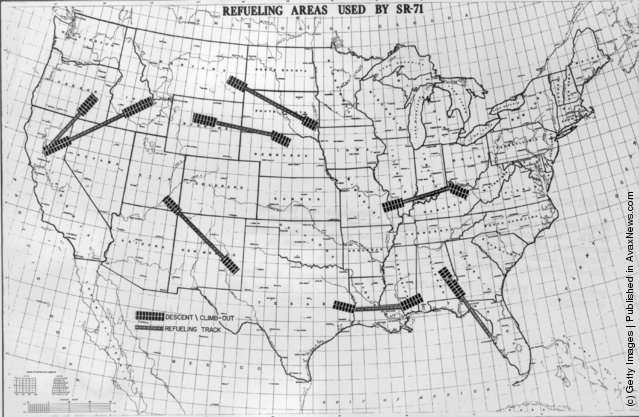
Refueling areas map used by SR-71. (Photo by Keystone/Getty Images). 30th June 1967
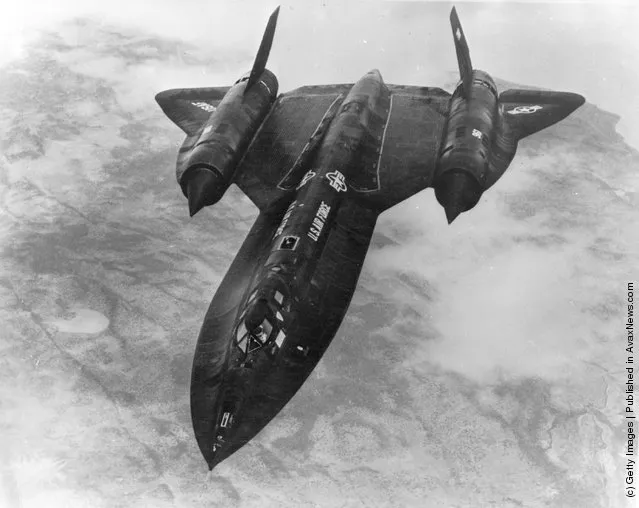
An airspeed record is expected to be set when the Lockheed SR-71 Blackbird reconnaisance aircraft flies from the States to Farnborough Air Show. It flies at an altitude of 80,000 ft, is made of titanium and cruises at three times the speed of sound – about 2,000 mph, August 31, 1974. (Photo by Keystone/Getty Images)
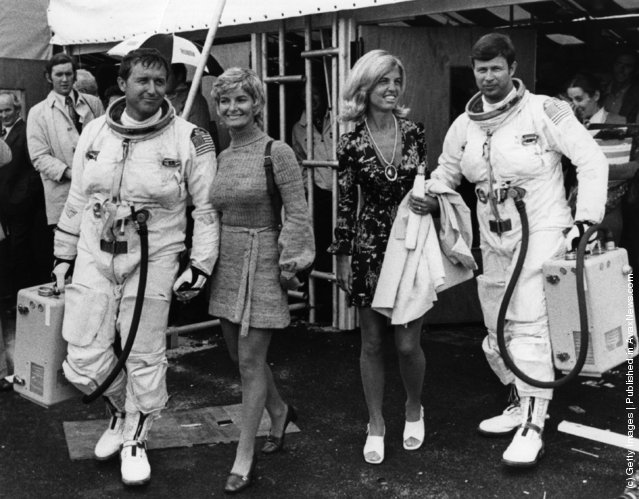
American airmen Major Jim Sullivan (left) and his English wife and Major Noel Widdifield and his wife after the airman had flown across the Atlantic in one hour, 55 minutes and 42 seconds in the world's most secret aircraft, the Lockhead SR-71. (Photo by Central Press/Getty Images). 2nd September 1974
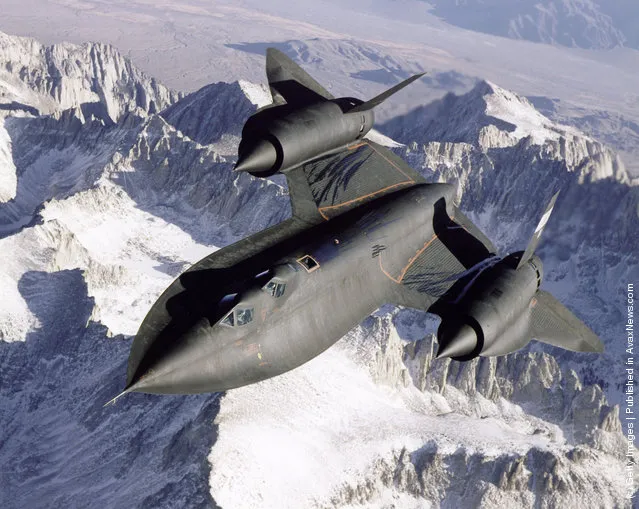
SR-71B Blackbird aerial reconnaissance aircraft photographed over snow capped mountains in 1995.
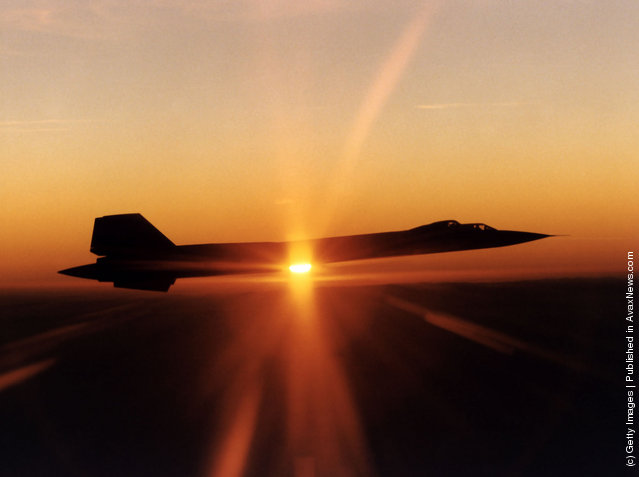
SR-71 Blackbird arial reconnaissance aircraft photographed at sunset. 1995
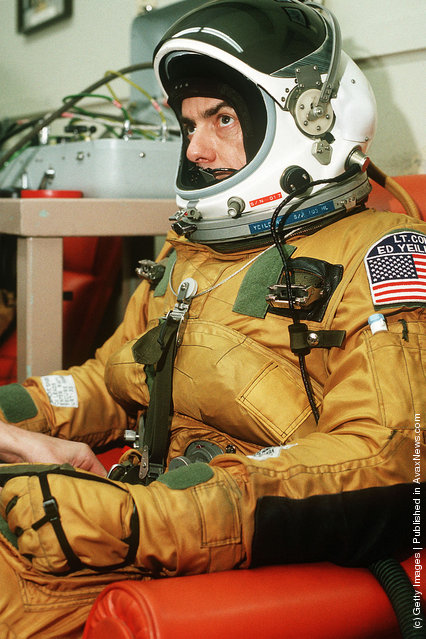
Lt. Col. Raymond E. Yeilding, pilot, sits in his flight suit prior to his recordbreaking, coast-to-coast flight in an SR-71 aircraft. The plane, which is being delivered to the National Air and Space Museum in Washington, D.C. for permanent display, made the flight in 68 minutes. Yeilding was assisted by Lt. Col. Joseph T. Vida, reconnaissance officer, who is assigned to Detachment 6, 2762nd Logisitics Squadron along with Yeilding. (Photo by USAF). 1998
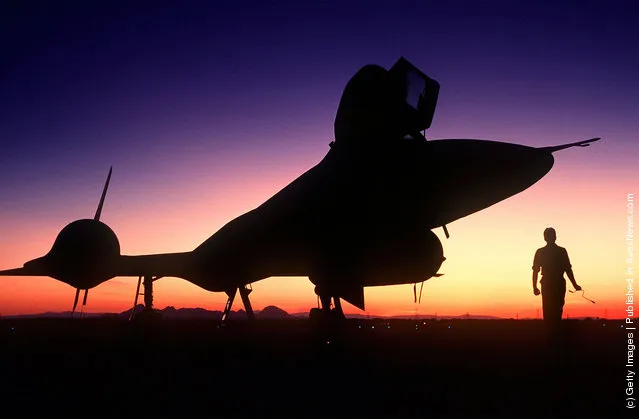
A right front view of an SR-71B Blackbird strategic reconnaissance training aircraft, silhouetted on the runway at sundown. (Photo by USAF)
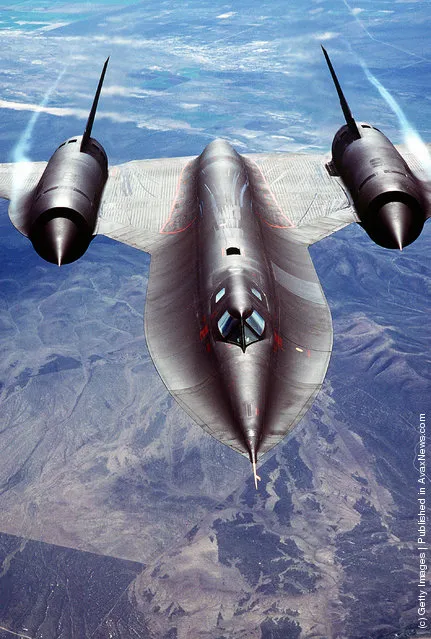
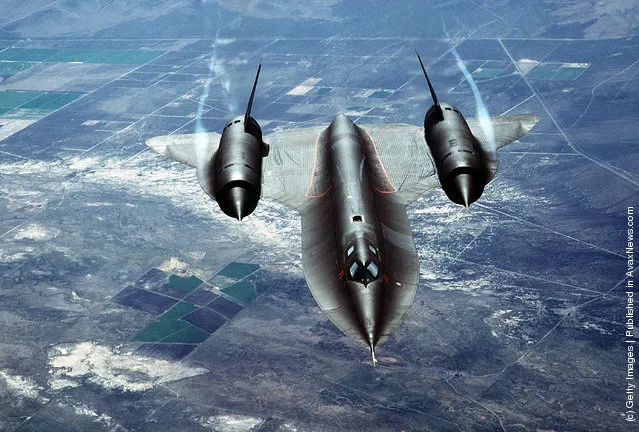
A U.S. Air Force SR-71A, also known as the “Blackbird”, is put through it's paces during a test flight over Beale Air Force Base in California. The aircraft is a strategic reconnaissance plane by Lockheed and is the world's fastest and highest flying operational aircraft. (Photo by Getty Images)
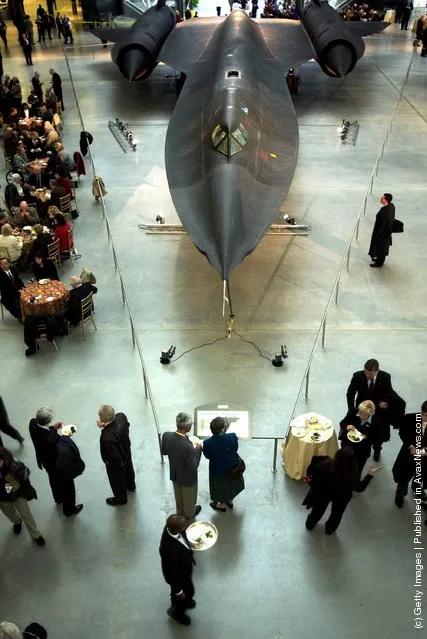
Guest and VIPs eat lunch near an SR-71 spy plane while others tour the new air and space museum after a dedication ceremony at the Steven F. Udvar-Hazy Center, the Smithsonian's new addition to the Air and Space Museum December 11, 2003 in Chantilly, Virginia. (Photo by Brendan Smialowski/Getty Images)
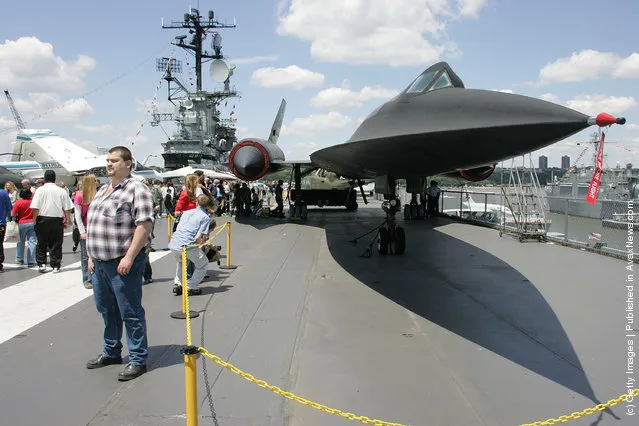
An unidentified visitor to the USS Intrepid poses for a picture in front of a SR-71 Blackbird during Memorial Day May 30, 2005 in New York City. (Photo by David Turnley/Getty Images)
07 Sep 2011 12:17:00,
post received
0 comments
